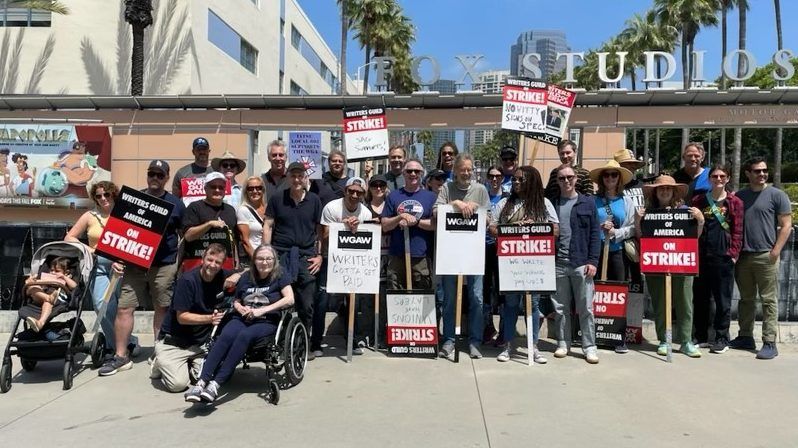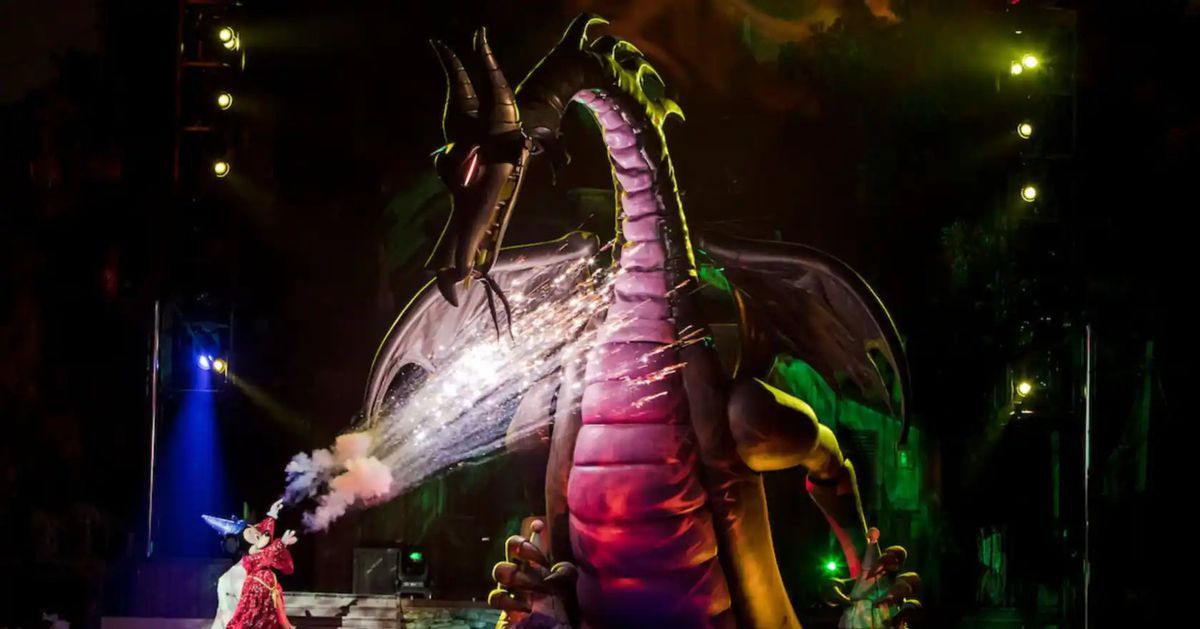'Bones' Reunion Picket Sparks Nostalgia for Procedural TV
Renowned alumni of the Jeffersonian Institute pulled out their security badges and patches to assemble Friday morning for a lively “Bones” writers strike reunion picket outside Fox Studios.
The gathering of writers, actors, directors and crew members from the Fox drama series proved once again that “Bones” was one of TV’s happiest sets during its 12-season run from 2005-2017. Star Emily Deschanel, who played forensic anthropologist Temperance “Bones” Brennan on the procedural, was in attendance at the picket held on Day 67 of Writers Guild of America strike. So were series showrunners Hart Hanson, Stephen Nathan, Jonathan Collier and Michael Peterson and writer-producers including Liz Benjamin, Dean Lopata, Janet Lin and Karine Rosenthal.
“All the truisms of why a show is a happy, non-toxic place is why ‘Bones’ was such a happy place,” Hanson told Variety. “Who is No. 1 on the call sheet? What is that person like? What is No. 2, 3, 4, 5 like? What is the line producer like? We had a happy crew. The actors were nice to the crew. There was no tension between the writers and the directing producer and the actors. It was a very pleasant place to work and it was that way for many, many years.”
The “Bones” experience also stands out to veterans because it was such a steady source of employment for so long. Few shows make it to Season 4 these days, let alone Season 12. The case-of-the-week format provided an engine that was overlaid with a slow-building romance for Deschanel’s character, who worked at the fictional Jeffersonian Institute, and her co-star, David Boreanaz, who played FBI Special Agent Seeley Booth.
Emily Deschanel was on the picket line this morning at the #Bones reunion #WGA strike to support the writers. https://t.co/Lfmz7YUCey pic.twitter.com/J0tvOFSj1p — Variety (@Variety) July 7, 2023
The working experience on a show with such longevity feels like a distant memory to many working Hollywood writers. The industry’s massive shifts over the past decade to a higher overall volume of series with fewer seasons, smaller writers rooms and fewer episode counts per season has taken a toll on the scribe tribe. The WGA and Alliance of Motion Picture and Television Producers are at odds over the WGA’s demand that more writers be hired per series and for a minimum 10 weeks at a time. Those demands would have been unthinkable just 10 years ago, because the entire episodic TV production process was markedly different.
“I feel very blessed for the time on ‘Bones’ because that was my introduction to how (TV) works. And it worked beautifully,” Peterson told Variety. “We worked for 46 weeks a year. Some years we got two-year pickups, and so you are able to plan your life. And I feel horrible for the next generation where you can’t plan your life. If you’re lucky, you’re working 10 weeks, and then you don’t know what’s going to happen next. I was very blessed for my time on ‘Bones’ and I would wish it for any other writer. It was a good way to live.”
The long hours of picketing since the strike began May 2 have allowed writers plenty of time to compare and contrast the paradigm of linear television versus the streaming model. It’s no surprise that writers who pour their heart and soul into series are frustrated by the relatively short shelf life of contemporary TV.
“I think they’re making a categorical error with all of this ‘Let’s cancel everything after two or three seasons,’ “ showrunner Mike Royce told Variety at the “Bones” picket. “I know the economic reasons behind it. And they have all this data proving that most shows go down (in viewership) after Season 3.”
What is lost, however, is the chance for fans to bond deeply with shows that become a steady habit for years and years. It also means that series stack up far fewer episodes for long-term library value. The success of enduring network procedurals like “Bones,” “ER,” “CSI,” “Grey’s Anatomy,” “NCIS” and “Law & Order:SVU” on streaming platforms is a potent example of the power of a deep library.
“It feels like you want to encourage the things that are growing an audience so that you can fill up your library — that’s how every hit show has ever been developed. And those hit shows are the ones that form a groove in you that you then return to later,” Royce said. “I think (streamers) just outsmarted themselves when it came to building libraries. And now they have to chase the newest shiniest thing all the time because that’s the model they built.”
Anders Holm, co-creator of Comedy Central’s “Workaholics,” was an assistant to showrunner Hanson on the first season of “Bones.” Today he’s a showrunner himself. The work that he observed across 22 episodes of “Bones” in Season 1 amounted to a master’s degree in television. The shorter episode orders and lack of exposure to physical production have made it harder for baby writers and assistants to find those apprenticeship opportunities. Holm still remembers his first peek behind the curtain into a writers room.
“It’s just inspirational to be around people who invent ideas out of their head and get paid for it,” Holm told Variety. “To be around those people before you are actually a quote-unquote paid writer – it just makes you want to work harder, ask questions and learn as much as you can.”
“The Simpsons” writer Ian Maxtone-Graham shows off the “Bones” badge and patch that he received when he made a cameo appearance on the show.
Holm voiced the concerns of others that the changing economics of TV will make long-running shows like “Bones” even more of a rarity in the coming years.
“They have to want to make TV again,” Holm told Variety. “They can bail on original content and just make reality shows if they want to. There’s something very special that writers have helped create over however many years that brings people together. Shows that we remember, characters that we love. If we want to get back to make special things like that, a deal’s gotta be made.”
Fans Gary Hairfield and Nancy Hairfield attend the “Bones” picket at Fox Studios
“Bones” delivered its last episode six years ago but the fandom has only grown, particularly now that the series is available in its entirety via streamers Hulu and Freevee as well the linear BBC America cable channel. Nancy Hairfield and Gary Hairfield are die-hard “Bones” fans who drove up from San Diego to take part in the demonstration in West Los Angeles. Gary pushed Nancy in a wheelchair while she held a WGA picket sign that declared “This Is Not the Way.” “I’m a huge fan of ‘Bones,’” Nancy explained with a smile.
The influence of “Bones” and its depiction of a savvy anthropologist was also evident when a young woman asked Deschanel to autograph the diploma she received in 2019 from the University of La Verne. Her major? Anthropology. Deschanel was clearly touched by the encounter.
Another non-WGA attendee was a young woman from South Korea who told Variety that she now works in television and aspires to become a writer. She was motivated in part by her fear of artificial intelligence apps taking over jobs now done by humans.
“I can’t stand AI,” said the woman, who declined to give her name. “This is my first time joining in a strike. I came here with my friends and I am truly passionate about advocating for the rights we as authors deserve.”
Sophia Sun contributed to this report.
Source: Variety


